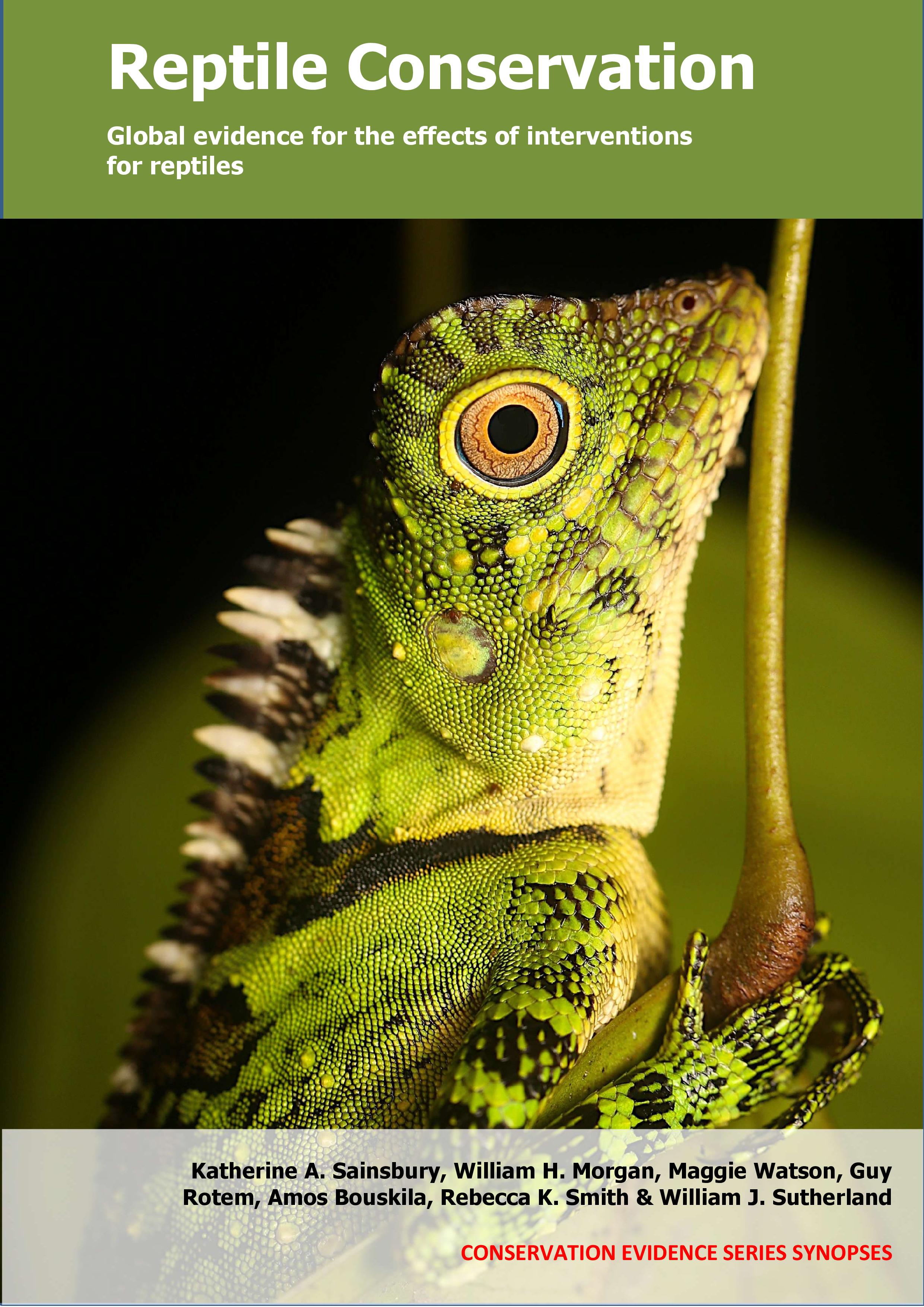Create or restore grasslands
-
Overall effectiveness category Awaiting assessment
-
Number of studies: 4
View assessment score
Hide assessment score
How is the evidence assessed?
-
Effectiveness
not assessed -
Certainty
not assessed -
Harms
not assessed
Study locations
Supporting evidence from individual studies
A replicated, site comparison study in 2005–2006 in an area of high altitude grassland in Gauteng, South Africa (Masterson et al. 2009) found that in an area of restored grassland that was previously cultivated, reptile species richness was lower in three of four comparisons than in areas of natural grassland, but total number of reptiles caught was similar. Reptile species richness was lower in previously cultivated grassland (7 species) than in natural grassland with no rocks (13 species) or many rocks (12 species) in three of four comparisons (other comparison found no significant difference; see paper for details). Total reptile captures was similar in all three grassland habitats (previously cultivated: 31 captures; natural no rocks: 66 captures; natural with rocks: 53 captures). In 2005, a nature reserve was expanded to include three areas of previously cultivated land (18,600 ha in total). One area was last ploughed in 2000–2002; the second was last cultivated in 2002–2003; the third area was ploughed in 2005 to allow for reseeding with indigenous species (details of reseeding not provided). These areas were compared to two areas of natural grassland, one of which had an abundance of scattered rocks. In December 2005–April 2006, a total of nine groups of traps (36 m drift fence, 5 pitfall and 8 funnel traps) were set up in the three habitat types (3 groups/habitat type). Traps were checked daily and all reptiles were identified to species level and rereleased where they were caught.
Study and other actions testedA replicated, controlled study in 2012 in sandy steppe grassland in Inner Mongolia, China (Zeng et al. 2014) found that restored grassland with dense vegetation had similar lizard species richness but greater abundance than degraded sparse grassland or natural grassland. Lizard species richness was similar but abundance was greater in restored grassland (richness: 3 species/plot, abundance: 58 individuals/plot) compared to degraded sparse, cash-crop dominated grassland (richness: 3, abundance: 42) and natural grassland (richness: 3, abundance: 28). Lizards were surveyed in 10 plots in each of three types of grassland: grassland restored to combat desertification and dominated by sweet vetch Hedysarum spp., korshinsk peashrub Caragana korshinskii and erect milkvetch Astrogalus adsurgens; degraded sparse grassland dominated by cash crops such as herba ephedra Ephedra sinica and alfalfa Medicago sativa, or natural (undisturbed) grassland. Lizards were surveyed using drift fences with pitfall traps (eight traps/plot) over seven consecutive days in June, July and September 2012 (21 trap days/plot). Lizards were individually marked by toe clipping prior to release.
Study and other actions testedA replicated, randomized, controlled study in 2014–2015 in six rock and grassland areas in Australian Capital Territory, Australia (McDougall et al. 2016) found that when native grasses and rock cover were restored, Australian pink-tailed worm-lizards Aprasia parapulchella recolonised rock outcrops within one year depending on additional management. Results were not statistically tested. Pink-tailed worm-lizards recolonised restored grass and rock plots after nine months (grass and rocks restored only: 4 live lizards and 1 shed skin observed; grass and rocks restored plus prescribed fire and herbicide application: 4 live lizards; grass and rocks restored plus prescribed fire: 2 lizards). There was no evidence of lizards at unrestored sites of poor habitat quality or at sites with grass and rock restored combined with herbicide application only. Four lizards and three shed skins were observed in plots in unrestored, nearby high-quality lizard habitat. In April–May 2014, plots (4 x 4 m) in six sites (150 m apart) were managed by: native grass and rock (30% rock cover) restoration alone; grass and rock restoration with prescribed fire (using a blow torch); grass and rock restoration with herbicide application (Glyphosate, 1:100 glyphosate:water); or grass and rock restoration with prescribed fire and herbicide application. In February 2015, all plots were surveyed for lizards (live sightings and skins) including two unmanaged plots/site (one in poor, the other near high-quality lizard habitat).
Study and other actions testedA replicated, paired sites, controlled study in 2014–2015 in four grasslands in California, USA (Wolf et al. 2018) found that restored grasslands had reduced snake abundance 13–24 years after restoration took place. After 13–24 years, restored grassland had 10 times lower snake abundance (0.09 snakes/plot) than unrestored grassland (0.92 snakes/plot). The authors reported that snake abundance was correlated with abundance of non-native house mice Mus musculus. In 1992 and 2003, four grasslands were partially restored with native perennial plants. In 2014–2015, two paired survey blocks (each 150 x 150 m) were set up in each grassland (8 total blocks): restored grassland and exotic annual grassland. Snake monitoring was carried out in April, July, and November 2014 and February–March 2015. Snakes were surveyed using three pairs of coverboards (metal and plywood) spaced at 75 m intervals along 150 m transects (4 transects/block, 192 total coverboards). Coverboards were surveyed in the mornings up to eight times/block and season (3,216 total coverboard surveys).
Study and other actions tested
Where has this evidence come from?
List of journals searched by synopsis
All the journals searched for all synopses
This Action forms part of the Action Synopsis:
Reptile Conservation
Reptile Conservation - Published 2021
Reptile synopsis





)_2023.JPG)














